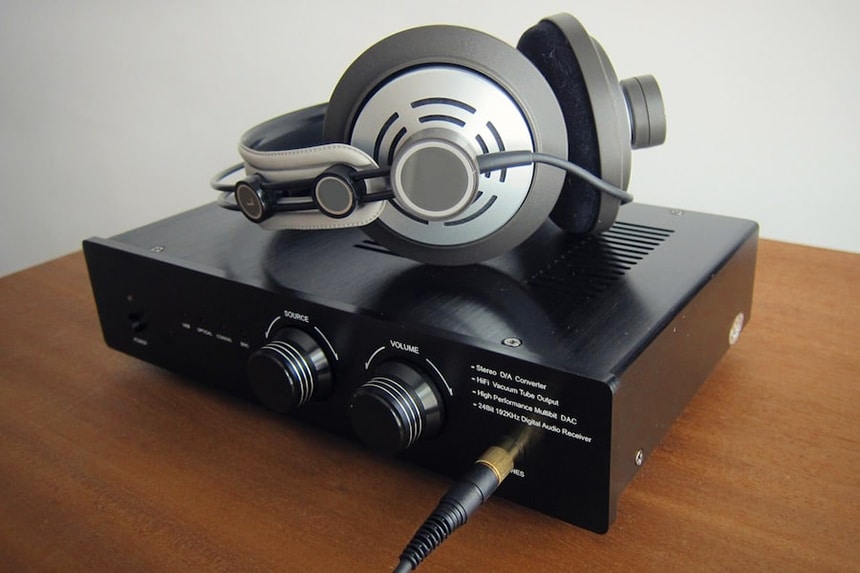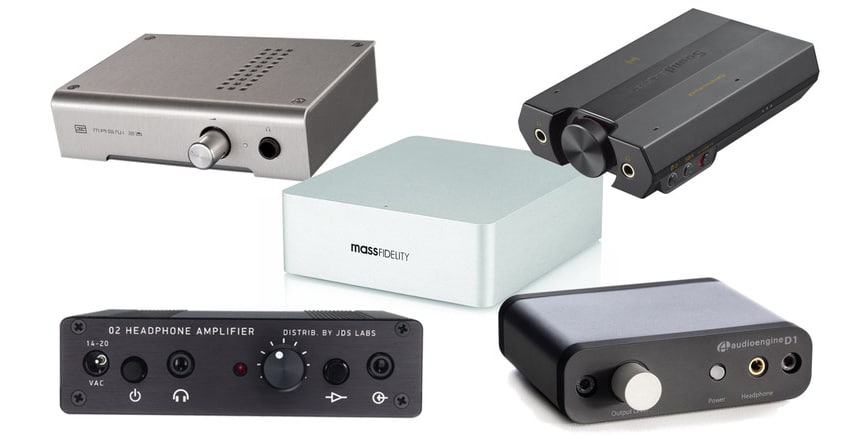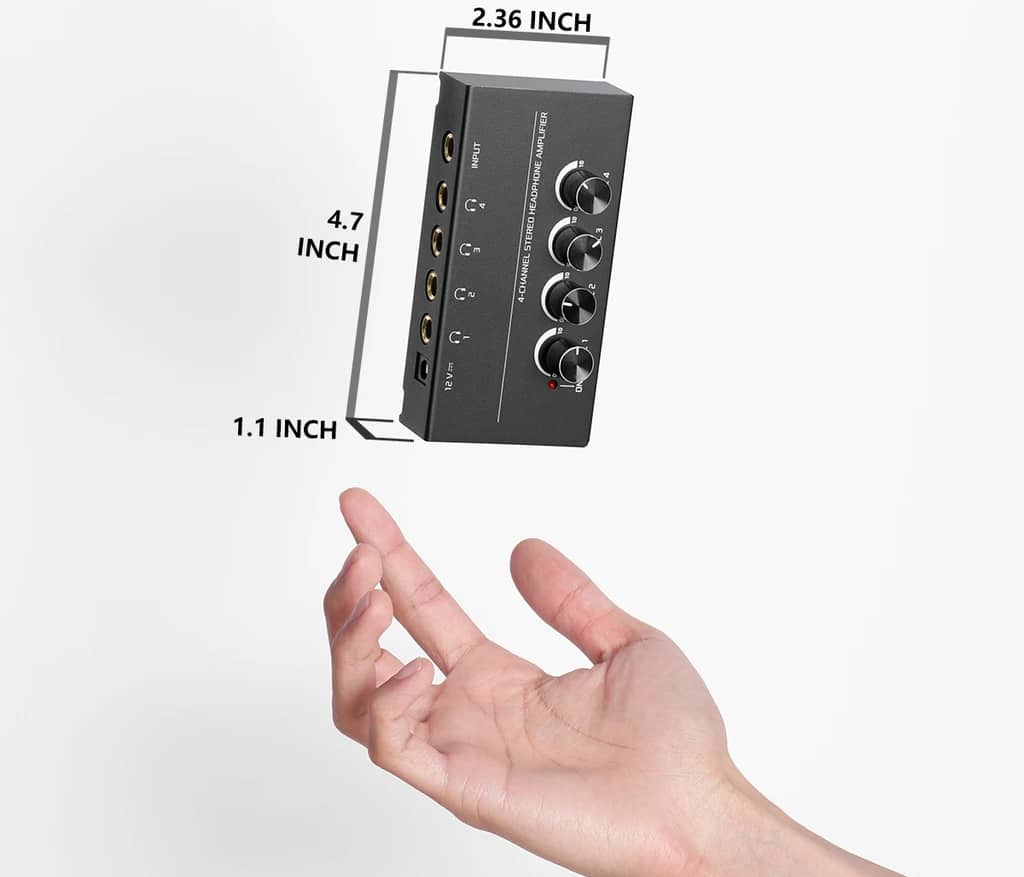Most people have no idea what a headphone amp is, which is unsurprising since they have little to no need for them. After all, modern audio source devices such as desktops, laptops, mobile phones, iPods, and tablets don’t need any extra components to play audio through your headphones. However, those keen on improving their sound experience find out about the headphone amp sooner or later.
If you’re one of them, some key questions you’ve likely asked yourself include: What is a headphone amp? What is it used for? Do I need one? What types of headphone amplifiers are there in the market? What pros and cons should I expect if I decide to get one? These should help you determine if you need a headphone amp and the reasons why. That said, you can find the answers to most of these questions below.

Before we get into what a headphone amplifier is used for, we first need to understand what it is. For one, if you remove the prefix “headphone,” then you realize it’s just an amplifier like any other. This means that it’s an electronic device whose main job is to increase the current, the power, or the voltage of a signal. When you then add the prefix, the name becomes self-explanatory, where you understand that the amplifier raises the level of the signal in your headphones.
By boosting a low-voltage signal high enough, the amplifier allows your headphones a much easier time when converting the signal to sound waves. Most modern headphone amps also feature built-in digital-to-analog converters abbreviated as DACs. As their name suggests, these convert a signal from binary form to analog, which can then be amplified before reaching the speakers. That said, they are hardly ever necessary since the phone, tablet, iPod, or computer will already have converted this signal beforehand.
Of course, this leads to the question, “what is the point of an external headphone amp?”
The caliber of amp components used in your devices varies from model to model. As such, one PC might have a top-tier built-in amp while another features a substandard alternative. Consequently, getting a headphone amp can help you get a better sound experience if yours is the latter.
One obvious reason to get a headphone amp is when the sound source, i.e., the device you’re playing the audio from, doesn’t have enough power to effectively drive the speakers in your headphones. This typically happens with high-end headphones as they have a higher impedance.
In layman’s terms, impedance is the resistance of the headphones to electrical signals and is measured in ohms. Higher impedance directly translates to higher resistance with a range as wide as 16-600 ohms. Consequently, with a higher impedance rating, you’ll need more power to drive the speakers. If the source device cannot produce the necessary power on its own, the headphone amp can help bridge the gap; hence, you get better, louder sound.
If your piano, guitar, or even EDM headphones have an impedance rating of 32 ohms and lower, you likely won’t need an amp. Most laptops and even mobile devices such as your smartphone will produce enough power for the headphones. However, with a rating of above 50 ohms, adding an amp to your listening setup might be necessary.

We mentioned earlier that some of these amps come with a digital-to-audio (DAC) converter. If you’re using a digital device such as a computer without a sound card, then the DAC is quite handy. It converts the digital signal in the form of 1s and 0s to an analog signal that can be played on speakers and headphones.
However, some omit the DAC from their construction and thus will only amplify analog signals. Most modern mobile devices already have a DAC built into them. However, the headphone amp will not work for any that don’t have a converter since there’s no analog audio signal to boost.
Notably, there is a variety of headphone amps available in the market, which of course, have varying capabilities and benefits. They include:
The design for all analog headphone amps is the same. They come with either one or two analog inputs where you’ll connect your audio source device. As such, connecting a phone, CD player, or other device is a piece of cake. Also, despite being compact, they require AC power, meaning they’ll need to be plugged into a socket. This makes it almost impossible to use an analog amp while on the move.
Occasionally you’ll come across analog headphone amps with a phono input. This is most compatible with either a phonograph or old-school turntable systems. Of course, if your source device doesn’t come equipped with a headphone jack, this is an excellent alternative you can use. Finally, all analog headphone amps feature a headphone jack and additional volume control.
For those who feel the quality of the headphone jack on their computers is robbing them of a top-tier sound experience, the computer audio headphone amp should be an ample solution. These typically plug in directly to the computer’s USB port via a cable or a USB port on the body of the device.
Additionally, they come with a built-in DAC, which again can make up for the shortcomings of the one built into your computer. Notably, some of these DACs can re-clock the incoming signal to improve the timing and sound experience on the output end.
According to most reviews, the AudioQuest amp is by far one of the most reliable headphone amps featuring this simple USB design. It incorporates a 32-Bit SABRE DAC for signal conversion, and with an adapter, you can use your high-powered headphones with an Android or Apple smartphone. Other options will include volume control on their bodies as well.
These are the most versatile headphone amps in the market and also the most common. As their name suggests, some of them will include a combination of inputs in their design. These include digital audio in, analog audio in, and even USB audio in. Some even have multiple digital and analog audio ins to work with.
While some will take power from your audio source, others are battery-powered. Additionally, some of these amps are powerful enough not only to drive headphones but also to drive other power amps and even powered speakers. As such, they should work for you no matter what types of headphones you’re using.
There are also those with singular inputs but multiple outputs, making it possible to connect different sets of headphones. Users recommend the Fifine Headphone Amplifier for buyers who want to connect multiple headphones. This option comes with four outputs, and they all feature their own volume knobs.
These are not common, but it’s possible to find a headphone amp that picks up a network signal without needing to be physically connected to the source device.
Finding headphone amp options in the market is fairly easy but choosing from among them is certainly not. If you want to pick the best option, consider the following factors:

Some amps are as small as a USB stick, while others as large as a console with a variety of options in between. For the person intending to use their headphone amp only when they are at home, the weight and size may not matter much, and hence they will be satisfied with a bulky option. Conversely, those who like to walk around with great-sounding music playing in their headphones have no choice but to pick compact units.
We mentioned before that the quality of inbuilt amps varies from PC to PC. This is also true for the headphone amp, and the variances will be brought about by the different internal components, including the DAC if present. Consequently, looking through the components and finding out about their quality could keep you from being disappointed when you eventually purchase a headphone amp.
As mentioned above, a key selling point for the Fifine Headphone Amplifier is the design that includes four outputs. This caters to people who want to connect multiple headphones. Those who need multiple inputs should also look at the options available and judge them according to the inputs available. They simply move on to another option if they don’t match their needs and expectations.
Lastly, check the headphone impedance before getting an amplifier. If the amp doesn’t have enough power to overcome the impedance of the headphones, then there is no need to buy it as it won’t improve your audio.
What is a balanced headphone amp?
True to its name, a balanced headphone amp can deliver independent but balanced audio signals to both sides of the headphones and their driver coils. This leads to improvements in the slew rate and the voltage swing rate. Additionally, since the two sides are not using a common ground plane, the amp eliminates crosstalk. Lastly, a balanced headphone amp should reduce the total harmonic distortion, thereby leading to better sound.
Asking what is better between a headphone amp or a DAC requires a somewhat complicated answer. Both are necessary for your audio needs and, more often than not, will be built into a singular device. Also, as we mentioned above, they have different functions.
The DAC is the first part of the equation since it changes a binary/digital signal to analog. This is necessary since headphones can only play analog signals. However, you may not enjoy the converted sound if the impedance/signal resistance of the headphones stops the signal.
This is where the headphone amp comes in. It boosts the incoming signal to overcome the impedance of your high-quality headphones, allowing you to enjoy the sound. That said, you can have a DAC and a headphone amp as individual devices.
Remember that most laptops, phones, and other source devices already have inbuilt amps and DACs. However, if you choose a headphone amp without an inbuilt DAC and the DAC in your computer is substandard, you may reduce your chances of getting quality audio. As such, picking one, the other, or both in a single device will depend on your needs and wants.
Linear headphone amps, just like the other headphone amps we discussed above, are capable of adding more power to the signal. However, their default setting is to output a similar signal to the one they get without adding any power.
For those asking, “what is a headphone amp?” we hope the write-up above provides enough answers. If not, asking questions in the comments section below for clarity is not prohibited. With this, deciding if you need a headphone amp and selecting one in the market should be inherently easier.